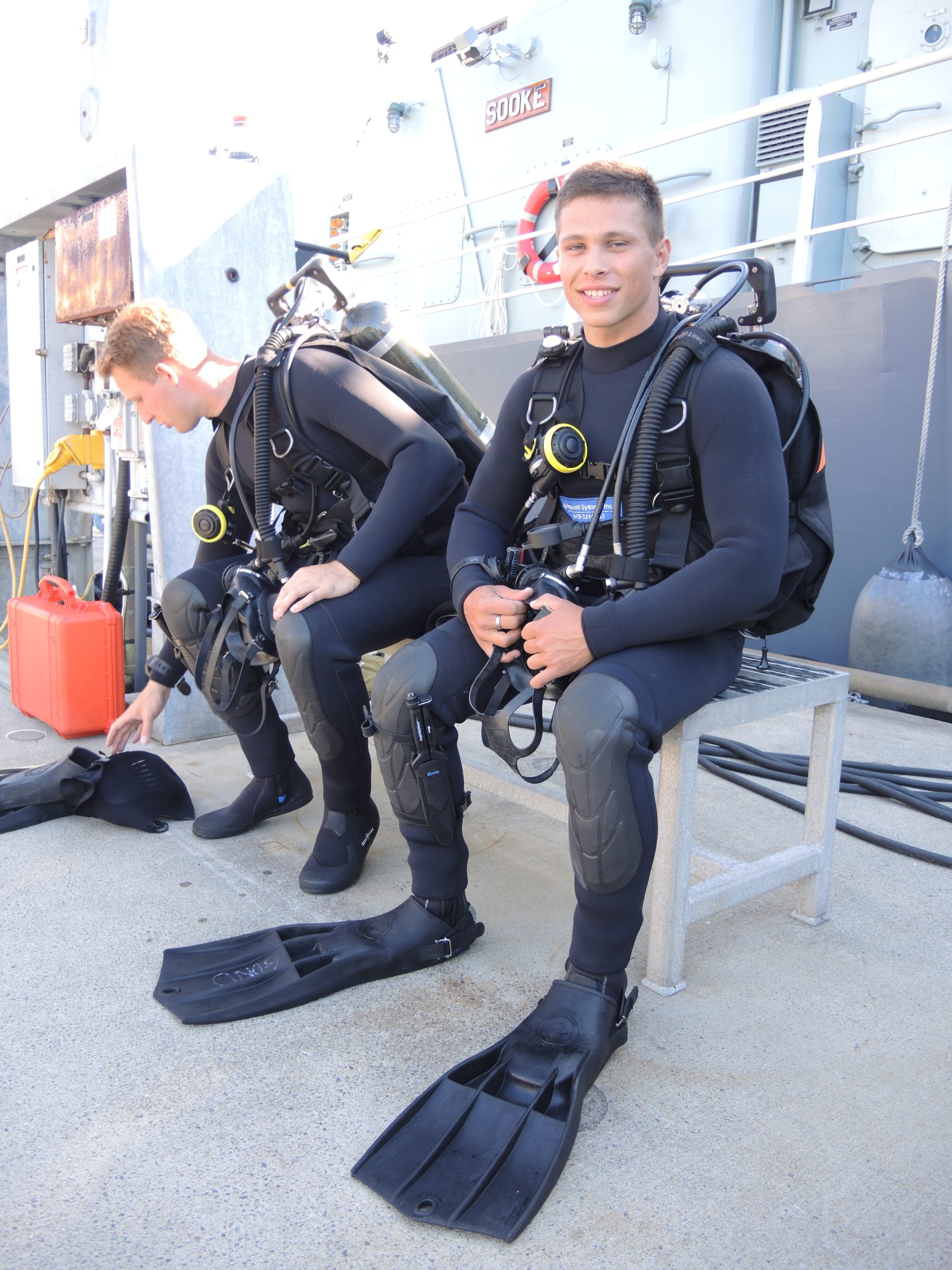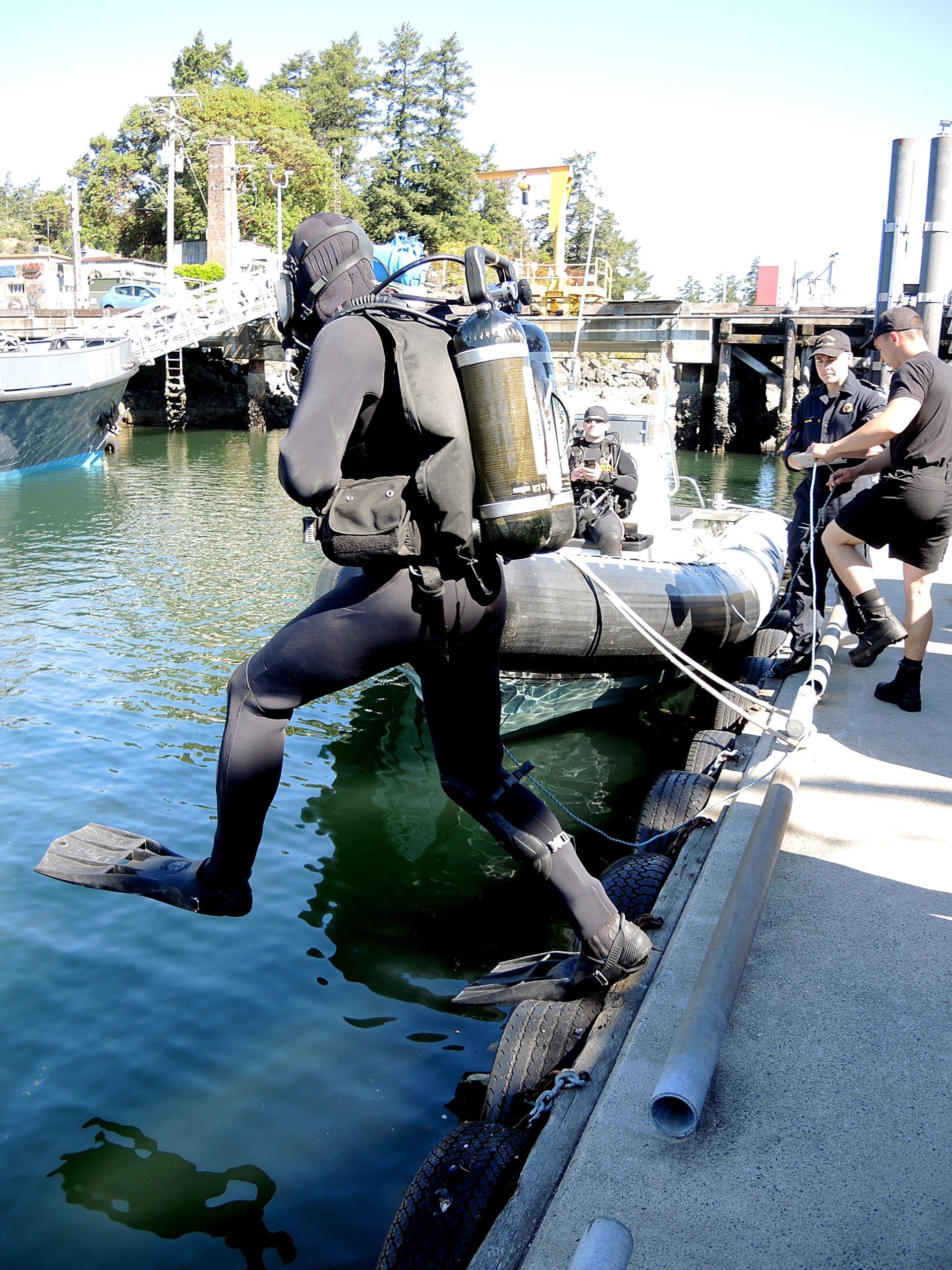‘PATs’ pitching in at Fleet Diving Unit (Pacific)
By Lookout Production on Jul 23, 2022 with Comments 0
Peter Mallett
Staff Writer
—
Personnel Awaiting Training (PATs) have become a short-term solution to address personnel shortages at the Fleet Diving Unit (Pacific) (FDU(P)).
In recent weeks, 12 Royal Military College (RMC) Cadets and seven members of Naval Fleet School (Pacific) (NFS(P)) rolled up their sleeves and worked with a litany of tasks at the Colwood-based unit. The PATs have been pushed into action this summer because they are facing longer than normal wait times for training due to COVID-19.
“Our Naval Cadets and Fleet School members are a tremendous help and have greatly improved our list of completed tasks,” said Lieutenant (Navy) Kevin Okihiro, FDU(P) Executive Officer.
The jobs range from simple maintenance chores to more complicated design and build projects and administrative work for the unit. FDU(P) was more than happy to give them something to do with their time, Lt(N) Okihiro said.
“We cannot afford to have junior sailors release prior to doing their trades training if we are to remedy the numbers the Canadian Armed Forces (CAF) is losing through attrition,” he said. “I believe a major factor in influencing people to join the military is to do things they don’t get the opportunity to do as civilians.”
The initiative, he says, gives the PATs a sense of purpose and some meaningful employment. Lt(N) Jeff Phillips, the Unit Regulating Petty Officer, said the recruits are doing an excellent job.
Getting to work
Acting Sub-Lieutenant (A/SLt) Michael Hatley, from Thompson, Man., began his naval career in 2017. He is currently enrolled at NFS(P) and awaits his Naval Warfare Officer Level 3 training. One of his recent assignments was to clean algae and barnacles from the underside of a Diving Tender vessel.
“I think the word is getting out that the Fleet Diving Unit (Pacific) is a great place to work for Personnel Awaiting Training,” A/SLt Hatley said. “I have worked in some great postings during my time in the CAF, but this unit is unlike anything I have ever seen in terms of teamwork and camaraderie.”
He says some of his other tasks since arriving at the unit in Oct. 2021 have included administrative work, helping revamp diver training material and working with the Clearance Diver Selection Course in a support role.
Making it work
Approximately 10 RMC students were assigned to assemble and affix the storage shelves at an old ammunition storage bunker. Naval Cadet (NCdt) Thomas Anstey and NCdt Benajamin Sauve converted the bunker into a warehouse to store support equipment for the Clearance Divers.
“We were sitting around in a classroom waiting for stuff to do but now we are doing a job that combines our engineering expertise with some hands-on construction skills,” NCdt Sauve said. “Doing this really gives us a chance to understand what work with the navy is really like.”
Using standard tools such as band saws, ratchets, drills, and levels, the Naval Cadets were building shelving units to store equipment that was previously stored in sea containers.
Learning opportunities
Some PATs had a chance to take coursing offered by the unit. A/SLt Kayla Coletta got a chance to take the unit’s Rescue Swimmer Course in the first week of July. The course discussed how to rescue a casualty overboard.
“The course was amazing; it was challenging and gave me the confidence to do what is necessary in an emergency situation,” A/SLt Coletta said. A/SLt Coletta normally operates FDU(P)’s social media accounts and takes pictures of members in action to help bolster the unit’s recruiting efforts.
There is a lot more work ahead for the new recruits. One of the upcoming tasks ASLt Hatley and NCdt Samuel Frenette say they look forward to is removing the sonar dome from HMCS Calgary before it heads to dry dock.
Supply and demand
Putting PATs to work at FDU(P) is not entirely new, says Lt(N) Okihiro. In the past, PATs have been employed in the unit’s Repair Section, trained to act as Diving Attendants, and sent as observers on Bomb Disposal Unit callouts. This year, PATs play a much larger role in the day-to-day routine at the unit.
Lt(N) Okihiro says he got the idea to give PATs a more prominent role when he heard an anecdotal story of a junior Non-Commissioned Member (NCM) who waited too long for his trades training while facing a lack of meaningful employment. The combination led to the NCM’s voluntary release from the CAF. Lt(N) Okihiro says the disappointing outcome really stuck with him because his unit is suffering from the opposite: too much work and not enough personnel. He reached out to his department heads and they quickly realized PATs could be a big advantage for all involved.
“I think this initiative will go a long way towards reassuring our junior members the RCN cares about their experience while they wait for their next trades course,” he said. “Not every unit, particularly warships, is necessarily able to accommodate untrained PATs, but units like FDU(P) and others, who can, ought to do so to keep our junior sailors awaiting training motivated and interested.”
Filed Under: Top Stories
About the Author:







